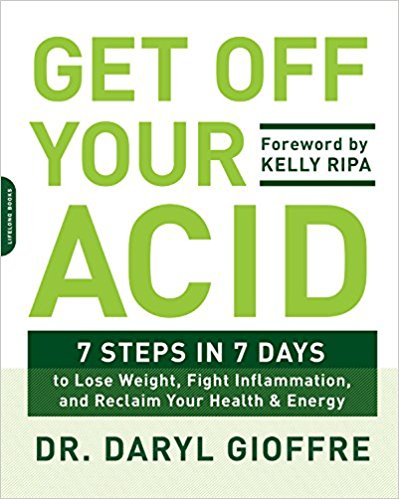Do you take a standard multivitamin?
If so, you are far from alone. A full third of all Americans takes a multivitamin. And multivitamins account for more than 40% of total US supplement sales. These little pills are, in fact, a multi-billion dollar industry.
For many people, multivitamins fall into the category of: what do I have to lose?
Well I’ve got news for you, multivitamins might seem harmless, but there’s more you need to know about those over the counter pills than meets the eye.
Today, we’ll explore everything you need to know about vitamin supplement options, including what to look for – and what you want to avoid at all costs.
By the way, if you’ve ever wondered if you can take the least expensive or “cheap brand” of any given supplement, you don’t want to miss this info.
So let’s get started…
Reading the Fine Print
If you walk away from reading this article and retain just one piece of advice, I hope it’s this… You’ve got to read labels!
Taking the time to read the ingredients on supplements is essential for your health. You can’t rely on anyone else to do this work for you.
The FDA does not regulate supplements and you can’t trust all companies to give you high quality ingredients because most of them don’t. Most – especially the big makers of multivitamins – are interested in profit above all else, including your health and wellness.
So that’s the most important thing, but with that said, I hope you’ll keep reading because ingredient labels can be hard to understand.
If you’ve ever felt like you need an advanced degree in science to decipher what’s in a supplement, whether it’s a multi or any other kind of supplement, I want to give you a cheat sheet.
What’s in a Multivitamin?
Take a quick look at the ingredient list of your standard multivitamin and you’ll see several highly questionable inactive ingredients like soy lecithin, hydrogenated oil, magnesium stearate or silicate, and titanium dioxide. In some  cases, even heavy metals like lead and mercury! And in the case of chewables, all kinds of junk including artificial sweeteners and artificial dyes and flavors – yuck!
cases, even heavy metals like lead and mercury! And in the case of chewables, all kinds of junk including artificial sweeteners and artificial dyes and flavors – yuck!
In addition to the ingredients, you’ll see a list of vitamins and minerals that are included, but have you ever wondered what that really means? How do they get all of those nutrients into the pill you swallow?
Most vitamin makers use synthetic forms of nutrients, so you’re not getting vitamin C from an orange, you’re getting vitamin C from chemical keto acid. Right off the bat, this means you’re getting poor quality sources of the vitamins and minerals your body needs. Most companies use the cheapest forms available, often from chemicals or even ROCKS. Yes, rocks.
One alternative is to take a “whole food” vitamin, which is taken from food sources rather than synthetic chemicals. This is better for sure, but you still have to be careful about what’s included.
Let’s look at 2 of the minerals that your body MOST needs supplemented (in addition to what’s in a diet filled with mineral-rich foods): calcium and magnesium.
Most companies use a non-chelated form of magnesium, which means it’s cheaper and does not get absorbed well in the stomach and small intestine. The absorption rate is much lower than a chelated form such as magnesium citrate, magnesium lactate, or magnesium glycinate.
 In Acid-Kicking Minerals, we use the most bio-available form of these minerals. Magnesium glycinate tends to provide the highest levels of absorption and bio-availability and is typically considered ideal for those who are trying to correct a deficiency.
In Acid-Kicking Minerals, we use the most bio-available form of these minerals. Magnesium glycinate tends to provide the highest levels of absorption and bio-availability and is typically considered ideal for those who are trying to correct a deficiency.
As far as calcium goes, many brands like Tums use calcium carbonate, which in addition to being altogether non-absorbable by about 25% of people, is flat out dangerous. Why?
It doesn't go to the bones, it lands in your joints and the walls of your blood vessels, leading to arthritis and blood vessel wall plaque buildup. It’s also made of limestone rocks! If you take Tums or other calcium carbonate supplements, you’re eating expensive rocks.
In Acid-Kicking Minerals, we use calcium citrate, the most effective, and again, bio-available.
Before we move on, you may be wondering about the vitamins that are in a typical multi that are not included in Acid-Kicking Minerals, like vitamin C. Good question.
Our Minerals actually do deliver vitamin C thanks to their natural flavoring. But also, we’re careful to deliver what your body really needs, rather than a long list of ingredients that sound good but are actually already delivered by a balanced diet.
Are You Absorbing What’s in Your Supplements?
There are 4 main types of delivery systems for supplements:
- Tablets
- Capsules
- Powders
- Liquids
You know the old expression, “you are what you eat”? Remember this important point – you’re NOT what you eat; you’re what you digest, absorb, and assimilate.
These 4 different delivery systems have different bio-availability and assimilation rates. What you’re going for is efficiency (for your body and your wallet). You want to be able to take the least amount with the most absorption.
When you take a tablet, which most multivitamins are, you are only absorbing 10-30% maximum. That’s assuming that your digestive system is

working at 100%, and no one has perfect digestion. Capsules are a little better with around 50% absorption.
When you move to a powder or liquid form, absorption rates skyrocket to 98%, because they largely bypass the digestive system and absorb directly into the bloodstream. So you don't need as much to get what you need.
Are the Ingredients in the Right Ratio?
Even when you find a good supplement with the right kind of ingredients, their ratios need to balance each other. For example, many people find value in the magnesium supplement, CALM by Natural Vitality brand. It is made from magnesium citrate without added, gross ingredients, so I like that (in fact, I used this supplement before I learned what I am about to say, and therefore, decided to make my own).
However, what happens for many people is that it depletes other essential minerals (like calcium, potassium, and sodium), because they aren’t taken in proper ratios.
In order to absorb calcium, you must have a calcium to magnesium ratio of 1:1 (as we do with Acid-Kicking Minerals). Many have MORE calcium, which consumers assume is a good thing, but the skewed ratio prevents you from absorbing the additional calcium.
Potassium bicarbonate is one of the most powerful neutralizers of acid, and compliments the blend of calcium and magnesium, as not to let any essential mineral get depleted.
Lastly, sodium bicarbonate, the MOST alkaline mineral, is missing in the vast majority of mineral supplements. In fact, when your body is in an acidic state, the stomach, pancreas, and kidneys will create bicarbonate to help neutralize acid. That is the same exact salt we use in Acid-Kicking Minerals.
As a side note, many people get nervous when they see the word “sodium.” However, this is NOT the sodium that you have been told to avoid. Sodium chloride, also known as your typical restaurant table salt, is the BAD salt. It is highly processed and bleached, and will raise your blood pressure.
Sodium bicarbonate is a completely different animal. It is only 28% sodium (remember, the body requires this most important alkaline mineral), and is one of the most powerful minerals you can put into your body.
By taking a supplement that delivers high quality minerals every day, you’re going to:
- Sleep better

- Have better muscle recovery from workouts
- Improve mental focus & clarity
- Reduce food cravings
- Alleviate stress and anxiety
- Reduce sugar cravings
That’s why Acid-Kicking Minerals fans take a scoop in water before bed, after working out, anytime they are craving sugar, and when they find themselves super stressed.

The Alkamind Acid-Kicking Minerals you love now comes in 3 delicious flavors…
- NEW Acid-Kicking Minerals Strawberry Kiwi
- NEW Acid-Kicking Minerals Blood Orange
- Original Acid-Kicking Minerals Lemon

GET OFF YOUR ACID!
Dr. Daryl
 Skip to content
Skip to content






